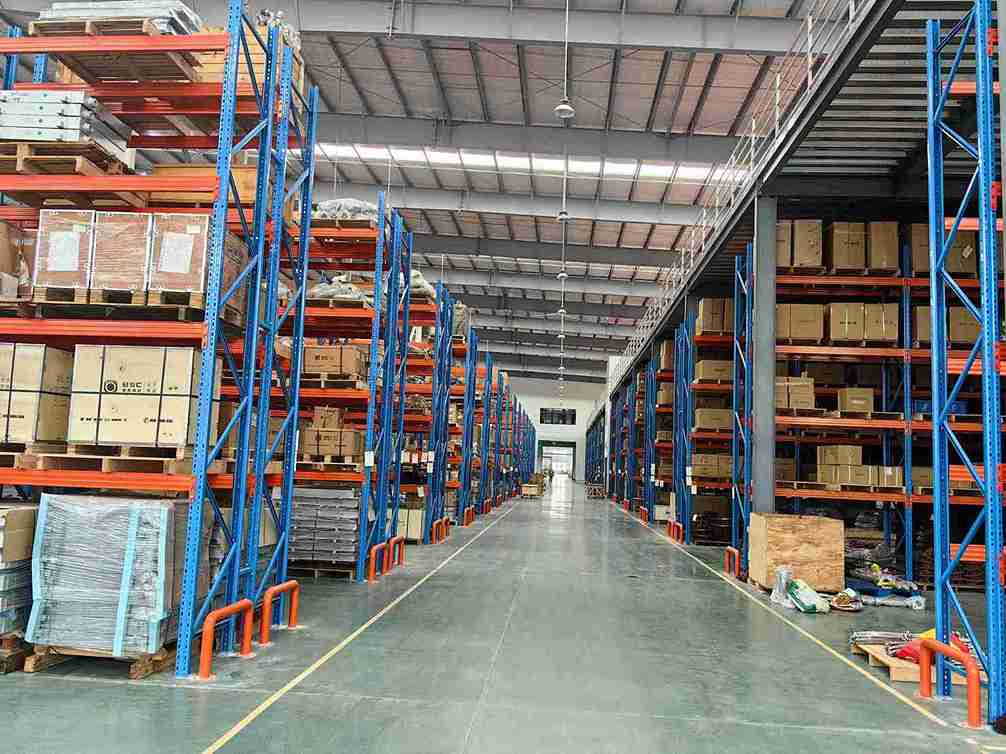📐 "First 50 Enterprise Queries Get Custom 3D Warehouse Design" Plan

Introduction
In today’s fast-paced logistics environment, industrial racking retrofit projects have become a necessity for warehouses looking to maximize storage, improve efficiency, and stay competitive. Unlike full-scale renovations, retrofitting allows businesses to upgrade their existing infrastructure with minimal downtime while significantly enhancing operational performance.
This comprehensive guide explores every aspect of industrial racking retrofit projects, from initial planning and system selection to installation, safety compliance, and long-term maintenance. Whether dealing with pallet racking systems, cantilever racks, or automated storage solutions, this resource provides actionable insights to help warehouse managers make informed decisions.

1. The Growing Importance of Industrial Racking Retrofit Projects
1.1 Why Warehouses Are Investing in Retrofits
The demand for industrial racking retrofit projects has surged due to:
-
E-commerce growth, requiring faster order fulfillment
-
Rising real estate costs, making expansion impractical
-
Advancements in racking technology, offering smarter storage solutions
1.2 Key Benefits of Retrofitting Over New Construction
Compared to building a new facility, industrial racking retrofit projects offer:
-
Lower upfront costs (no need for land acquisition or major construction)
-
Faster implementation (weeks instead of months)
-
Minimized operational disruptions (phased installations keep workflows running)
2. Critical Steps in Planning Industrial Racking Retrofit Projects
2.1 Conducting a Thorough Warehouse Audit
Before launching industrial racking retrofit projects, businesses must assess:
-
Current storage capacity vs. future needs
-
Floor load limits and structural integrity
-
Existing workflow bottlenecks
2.2 Choosing the Right Racking System for Your Retrofit
Not all industrial racking retrofit projects require the same solution. Key options include:
-
Selective Pallet Racking – Ideal for high-SKU environments needing direct access
-
Drive-In/Drive-Thru Racking – Best for high-density, FIFO (First-In-First-Out) storage
-
Push-Back Racking – Enables LIFO (Last-In-First-Out) storage with dynamic loading
-
Cantilever Racking – Perfect for long, bulky items like pipes and lumber
2.3 Integrating Automation into Industrial Racking Retrofit Projects
For warehouses looking to future-proof operations, automated storage and retrieval systems (AS/RS) can be incorporated into industrial racking retrofit projects, including:
-
Vertical Lift Modules (VLMs) – Maximize vertical space
-
Horizontal Carousels – Speed up picking processes
3. Overcoming Common Challenges in Industrial Racking Retrofit Projects
3.1 Ensuring Structural Safety and Compliance
One of the biggest risks in industrial racking retrofit projects is failing to meet safety standards. Key considerations include:
-
OSHA and RMI (Rack Manufacturers Institute) compliance
-
Seismic and wind load requirements
-
Proper anchoring and beam deflection limits
3.2 Minimizing Downtime During Installation
To keep operations running smoothly during industrial racking retrofit projects, strategies include:
-
Phased installations (section-by-section upgrades)
-
Night or weekend work shifts
-
Temporary storage solutions
3.3 Budgeting and Cost Management
While industrial racking retrofit projects are cost-effective, unexpected expenses can arise. A well-planned budget should account for:
-
Racking system costs ($50–$200 per pallet position)
-
Professional installation fees
-
Potential reinforcement needs (floor strengthening, additional supports)
4. The Step-by-Step Execution of Industrial Racking Retrofit Projects
4.1 Pre-Installation: Design and Engineering
Before any physical work begins, industrial racking retrofit projects require:
-
3D warehouse layout simulations
-
Load capacity testing
-
Permit acquisition (if required by local regulations)
4.2 Installation: Best Practices for Efficiency
A smooth installation process for industrial racking retrofit projects involves:
-
Professional racking installers (avoiding DIY mistakes)
-
Precision alignment checks (ensuring beams and uprights are level)
-
Real-time adjustments (addressing unforeseen obstacles)
4.3 Post-Installation: Inspection and Training
After completing industrial racking retrofit projects, businesses must:
-
Conduct load tests and safety inspections
-
Train staff on new storage protocols
-
Schedule regular maintenance checks
5. Measuring the ROI of Industrial Racking Retrofit Projects
5.1 Immediate Benefits
-
Increased storage density (up to 50% more pallet positions)
-
Faster order picking (reducing labor costs)
5.2 Long-Term Advantages
-
Extended warehouse lifespan (delaying costly relocations)
-
Scalability (easy modifications for future growth)
6. Future Trends in Industrial Racking Retrofit Projects
6.1 Smart Warehousing and IoT Integration
Emerging technologies are transforming industrial racking retrofit projects, including:
-
RFID tracking for inventory management
-
AI-powered warehouse optimization
6.2 Sustainable Retrofitting Solutions
Eco-conscious warehouses are adopting:
-
Recycled steel racking components
-
Energy-efficient AS/RS systems
Conclusion
Industrial racking retrofit projects offer a strategic, cost-efficient way to modernize warehouses without the need for expensive expansions. By carefully planning, selecting the right systems, and ensuring compliance, businesses can achieve higher storage efficiency, improved safety, and long-term scalability.
For companies considering industrial racking retrofit projects, partnering with experienced racking specialists ensures a seamless transition and maximum return on investment.
FAQs
1. How much can I expect to save with an industrial racking retrofit compared to a new warehouse?
Most industrial racking retrofit projects cost 50–70% less than constructing a new facility while delivering similar storage gains.
2. What’s the typical timeline for completing industrial racking retrofit projects?
Depending on warehouse size, most industrial racking retrofit projects take 4–12 weeks from planning to full implementation.
3. Can I retrofit my warehouse without shutting down operations?
Yes, phased installations allow warehouses to remain operational during industrial racking retrofit projects.
4. How often should racking systems be inspected after a retrofit?
OSHA recommends annual inspections, but high-traffic warehouses should check every 6 months.
5. What’s the best racking system for cold storage retrofits?
Selective pallet racking with corrosion-resistant coatings is ideal for cold storage industrial racking retrofit projects.




